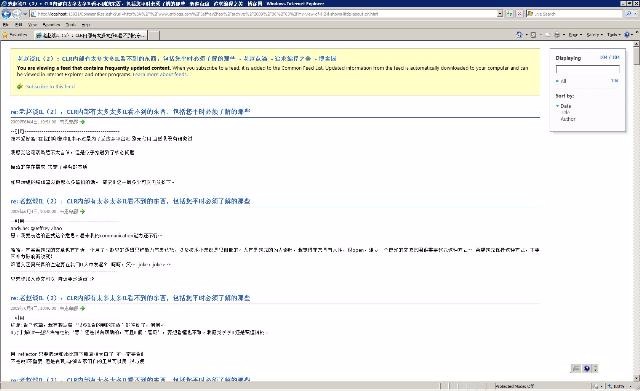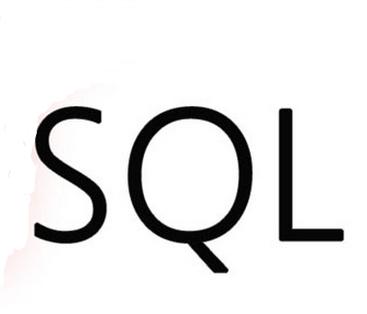A brief discussion on core architecture design
Recently, the discussion atmosphere in the blog park has been lively, and valuable comments have emerged one after another. Sometimes we would like to subscribe to the RSS comments of a certain article, but unfortunately the blog park does not currently have this function. For registered users, we can click the "Subscribe to Reply" link below the comment box to receive emails when new comments appear. It's a pity that anonymous users have to refresh constantly to pay attention to what has been discussed recently. But who are we? We are programmers, and this obstacle should be nothing more than a trivial matter for us. Build your own site, get page data, analyze HTML, and output it as RSS, it's that simple. Lao Zhao gave the simplest example for this. You can subscribe to the comments of any article on http://jeffreyzhao.cnblogs.com. Because it is just a simple personal tool program, it does not consider performance, scalability, scalability, fault tolerance, and discards any "best practices" such as unit testing and dependency injection. In a word, it comes as easy as it comes. This example consists of two parts. The first part is a static HTML page that is generated based on the article URL and redirects to its RSS link. Just a few lines of HTML
1. Code example for manually generating comment RSS

##Introduction: Recently, the discussion atmosphere in the blog park has been lively, and valuable comments have emerged one after another. Sometimes we would like to subscribe to the RSS comments of a certain article, but unfortunately the blog park does not currently have this function. For registered users, we can click the "Subscribe to Reply" link below the comment box to receive emails when new comments appear. It's a pity that anonymous users have to refresh constantly to pay attention to what has been discussed recently.
2. php gets the values of form form radio buttons and check boxes

Introduction: Radio buttons generally appear in groups, with the same name value and different value values. In a group of radio buttons, only one radio button can be selected at the same time. Selected.
3. PHP implements front-end and back-end real-time push based on websocket

Introduction: Register an account on the goeasy official website and create a new app. After the APP is created, the system will automatically generate two keys for the app, one can be used to receive and push (supper key ), the other can only be used to receive (subscriber key).
4. HTML implementation of voting website cheating scheme that restricts IP

#Introduction: Many voting websites cannot vote repeatedly. They mainly restrict IP addresses. An IP address can only vote once. Let’s take a look at it together. Let’s look at the voting website cheating scheme that uses HTML to limit IP addresses. Friends who need it can refer to

#Introduction: Range object: It is a fragment (HTML fragment), which contains a node or part of a text node. Under normal circumstances, only
6 is possible on the page at the same time. Detailed explanation of the let command in ES6

Introduction: let is a new copy command in ES6. The let assignment command can only be called in the {} code block. This article mainly introduces the let command in ES6. Friends who need it can refer to
7. Comprehensive exposure to SQL syntax (5)

Introduction: BETWEEN...AND operator Determines whether a certain person's value is within a specific range. This operator can only be used in SQL statements.
Introduction: printf: Output string in PHP (echo, print, printf, print_r, var_dump): In PHP, there are four methods to output string. The echo structure can output multiple ones at a time; print() can only output one; printf() can format the output; print_r() can output an array, which is very beneficial for debugging. 1. echo echo is a keyword of PHP, it does not return. In terms of writing, it can omit the parentheses. The following code: echo'Test String'; echo('Test String'); 2.print print is also a PHP
9. File upload PHP image file upload implementation code
Introduction: File upload: File upload PHP Image file upload implementation code: For the security of the website, uploading PHP files is definitely not allowed. If someone enters your background and uploads A php file and your website source code are all saved and become his, and he can package them directly to see your code. Therefore, you must control the uploaded directory and file type. Generally, only images can be uploaded. Creating a File Upload Form It is very useful to allow users to upload files from a form. Please look at the following HTML form for uploading files: Copy the code as follows:
Introduction: Powerpoint2003 official download free full version: Powerpoint2003 official download free full version PHP Understand print Summary of the difference between EOT delimiter and echo EOT usage: echo can output multiple strings at the same time in HTML and PHP writing, and parentheses are not needed. Print can only output a string at the same time and requires parentheses. The usage of print is very similar to C language, so % in the output content will be specially interpreted. Echo has no return value, print() has a return value, and returns false when its execution fails (such as disconnection). echo can have multiple parameters, print can have one parameter. It is recommended to use echo.
[Related Q&A recommendations]:
php - yii custom rules, parameter passing
python - How does Flask extract images from articles and display them on the homepage?
objective -c - How does Ali Wukong's iOS SDK get all group lists
The above is the detailed content of A brief discussion on core architecture design. For more information, please follow other related articles on the PHP Chinese website!

Hot AI Tools

Undresser.AI Undress
AI-powered app for creating realistic nude photos

AI Clothes Remover
Online AI tool for removing clothes from photos.

Undress AI Tool
Undress images for free

Clothoff.io
AI clothes remover

Video Face Swap
Swap faces in any video effortlessly with our completely free AI face swap tool!

Hot Article

Hot Tools

Notepad++7.3.1
Easy-to-use and free code editor

SublimeText3 Chinese version
Chinese version, very easy to use

Zend Studio 13.0.1
Powerful PHP integrated development environment

Dreamweaver CS6
Visual web development tools

SublimeText3 Mac version
God-level code editing software (SublimeText3)

Hot Topics
 1386
1386
 52
52
 Alipay PHP SDK transfer error: How to solve the problem of 'Cannot declare class SignData'?
Apr 01, 2025 am 07:21 AM
Alipay PHP SDK transfer error: How to solve the problem of 'Cannot declare class SignData'?
Apr 01, 2025 am 07:21 AM
Alipay PHP...
 Explain JSON Web Tokens (JWT) and their use case in PHP APIs.
Apr 05, 2025 am 12:04 AM
Explain JSON Web Tokens (JWT) and their use case in PHP APIs.
Apr 05, 2025 am 12:04 AM
JWT is an open standard based on JSON, used to securely transmit information between parties, mainly for identity authentication and information exchange. 1. JWT consists of three parts: Header, Payload and Signature. 2. The working principle of JWT includes three steps: generating JWT, verifying JWT and parsing Payload. 3. When using JWT for authentication in PHP, JWT can be generated and verified, and user role and permission information can be included in advanced usage. 4. Common errors include signature verification failure, token expiration, and payload oversized. Debugging skills include using debugging tools and logging. 5. Performance optimization and best practices include using appropriate signature algorithms, setting validity periods reasonably,
 Describe the SOLID principles and how they apply to PHP development.
Apr 03, 2025 am 12:04 AM
Describe the SOLID principles and how they apply to PHP development.
Apr 03, 2025 am 12:04 AM
The application of SOLID principle in PHP development includes: 1. Single responsibility principle (SRP): Each class is responsible for only one function. 2. Open and close principle (OCP): Changes are achieved through extension rather than modification. 3. Lisch's Substitution Principle (LSP): Subclasses can replace base classes without affecting program accuracy. 4. Interface isolation principle (ISP): Use fine-grained interfaces to avoid dependencies and unused methods. 5. Dependency inversion principle (DIP): High and low-level modules rely on abstraction and are implemented through dependency injection.
 How to automatically set permissions of unixsocket after system restart?
Mar 31, 2025 pm 11:54 PM
How to automatically set permissions of unixsocket after system restart?
Mar 31, 2025 pm 11:54 PM
How to automatically set the permissions of unixsocket after the system restarts. Every time the system restarts, we need to execute the following command to modify the permissions of unixsocket: sudo...
 How to debug CLI mode in PHPStorm?
Apr 01, 2025 pm 02:57 PM
How to debug CLI mode in PHPStorm?
Apr 01, 2025 pm 02:57 PM
How to debug CLI mode in PHPStorm? When developing with PHPStorm, sometimes we need to debug PHP in command line interface (CLI) mode...
 Explain the concept of late static binding in PHP.
Mar 21, 2025 pm 01:33 PM
Explain the concept of late static binding in PHP.
Mar 21, 2025 pm 01:33 PM
Article discusses late static binding (LSB) in PHP, introduced in PHP 5.3, allowing runtime resolution of static method calls for more flexible inheritance.Main issue: LSB vs. traditional polymorphism; LSB's practical applications and potential perfo
 How to send a POST request containing JSON data using PHP's cURL library?
Apr 01, 2025 pm 03:12 PM
How to send a POST request containing JSON data using PHP's cURL library?
Apr 01, 2025 pm 03:12 PM
Sending JSON data using PHP's cURL library In PHP development, it is often necessary to interact with external APIs. One of the common ways is to use cURL library to send POST�...
 Explain late static binding in PHP (static::).
Apr 03, 2025 am 12:04 AM
Explain late static binding in PHP (static::).
Apr 03, 2025 am 12:04 AM
Static binding (static::) implements late static binding (LSB) in PHP, allowing calling classes to be referenced in static contexts rather than defining classes. 1) The parsing process is performed at runtime, 2) Look up the call class in the inheritance relationship, 3) It may bring performance overhead.




